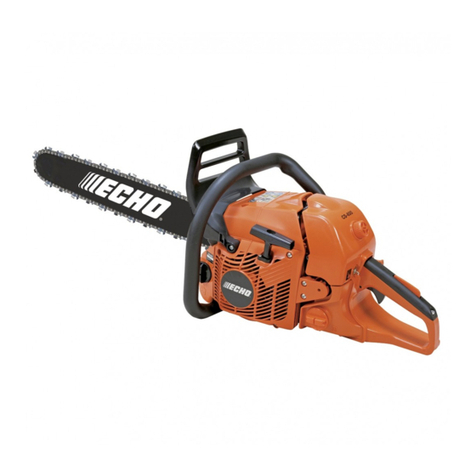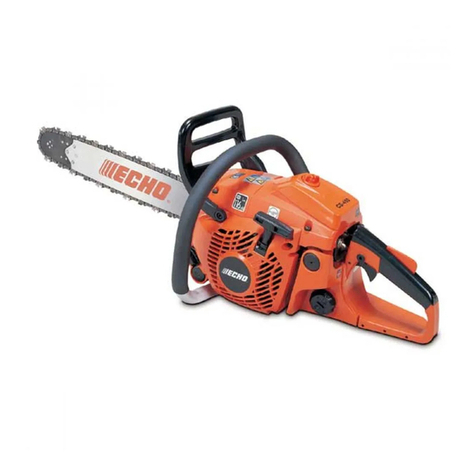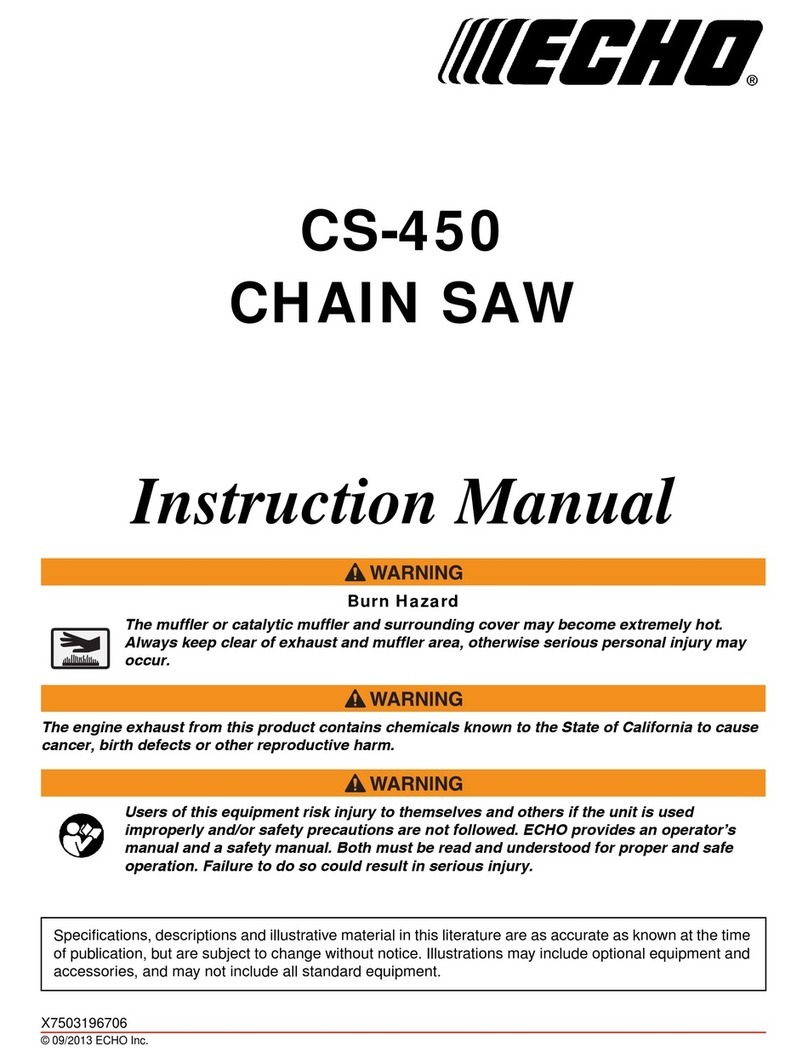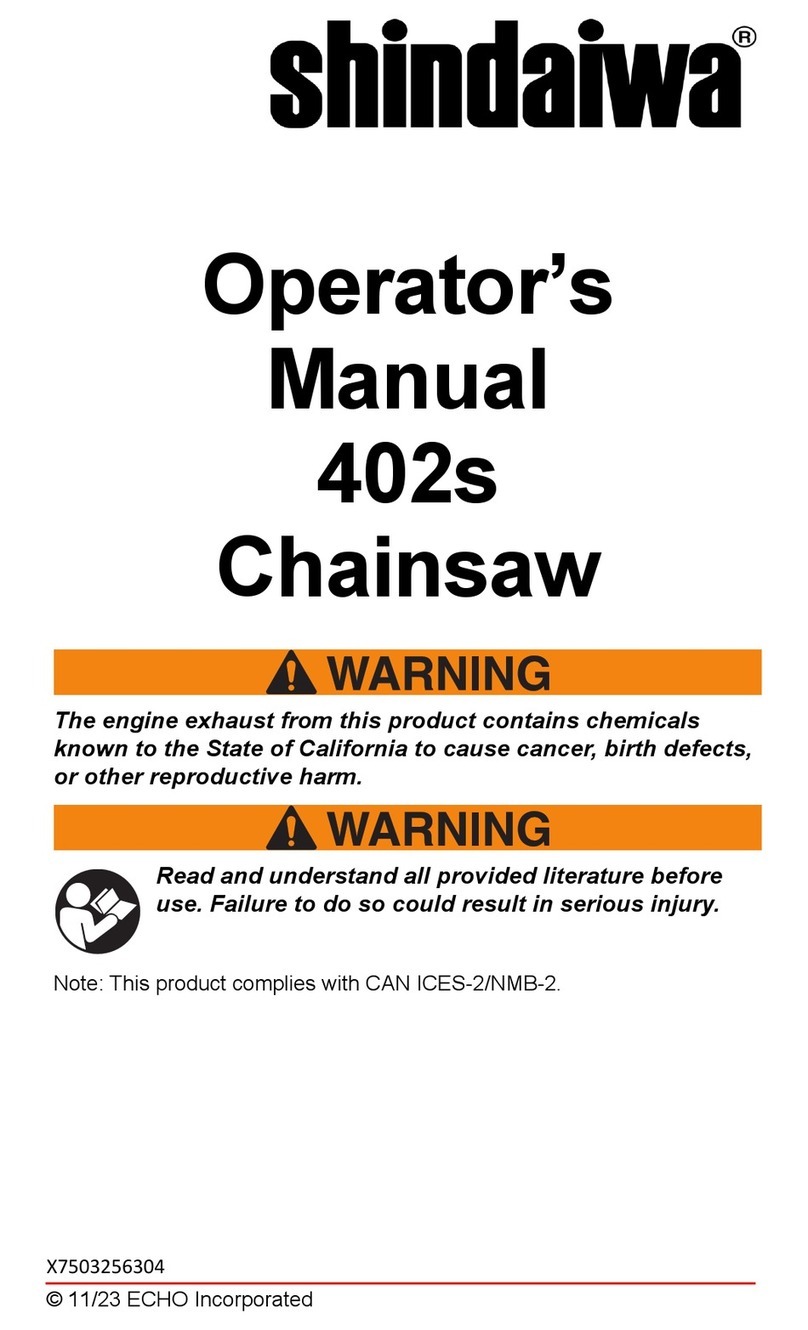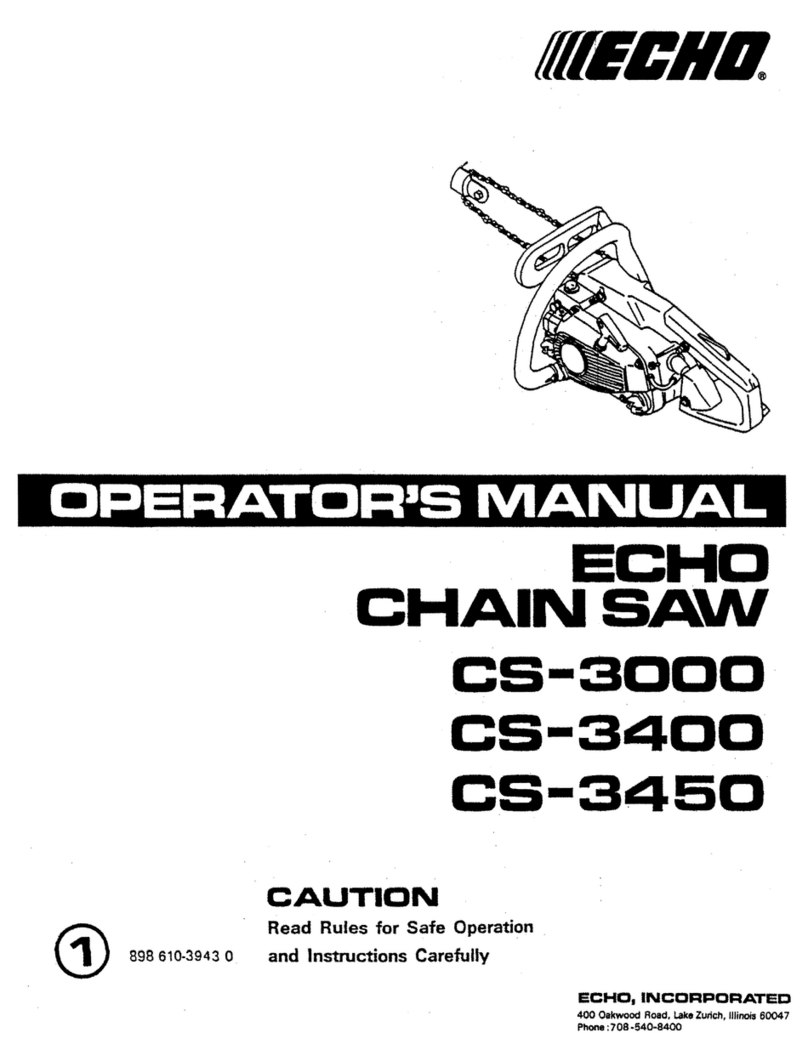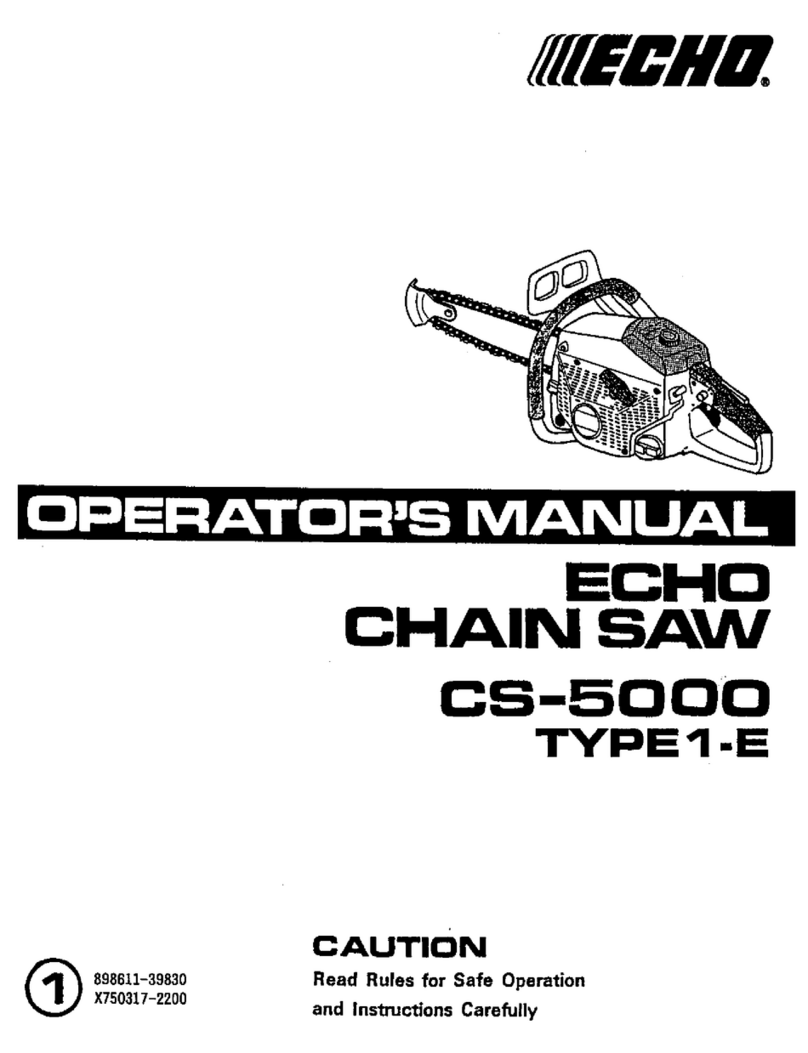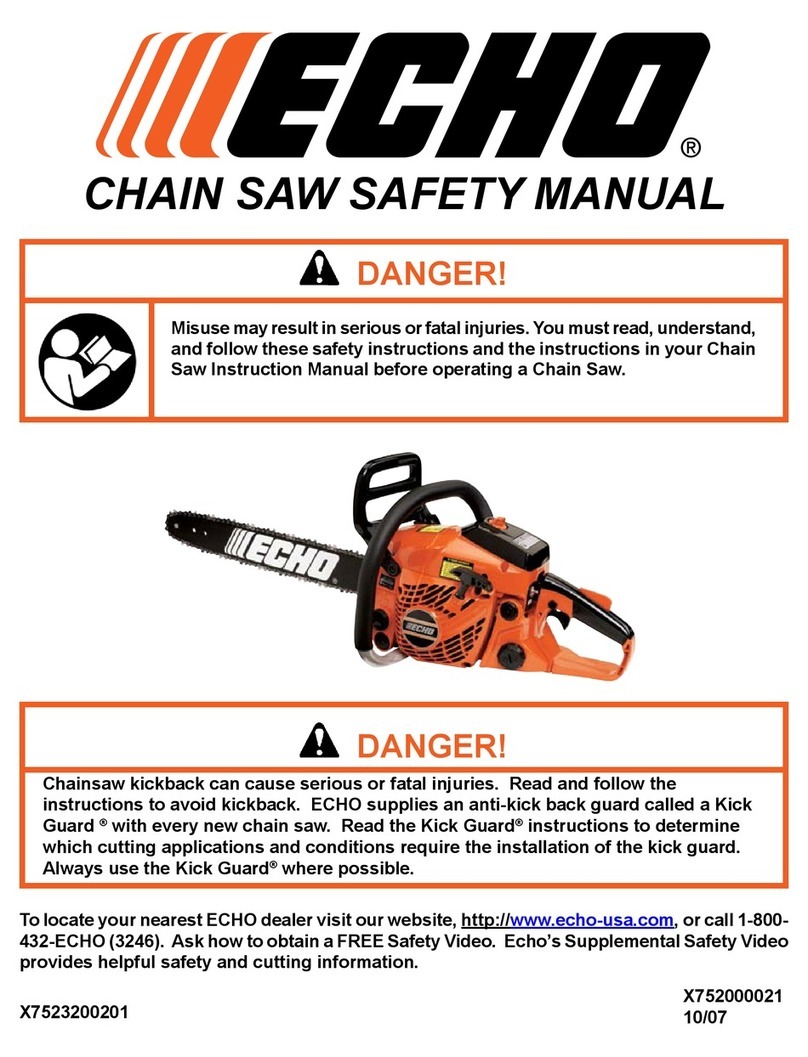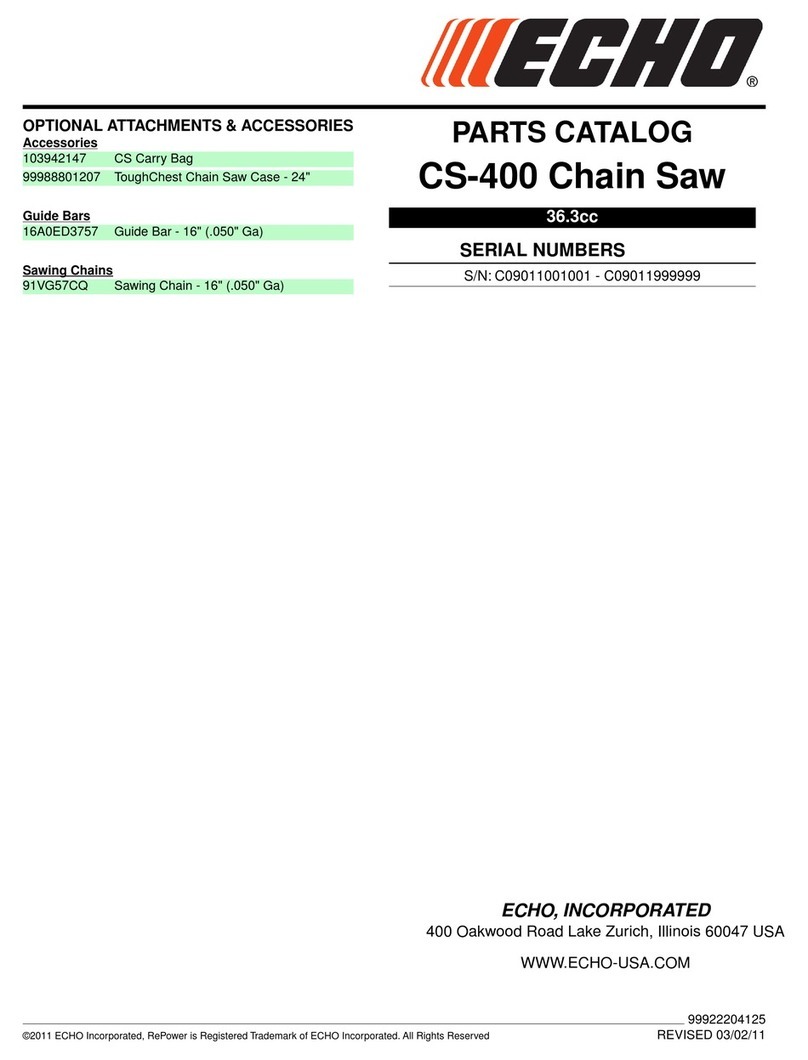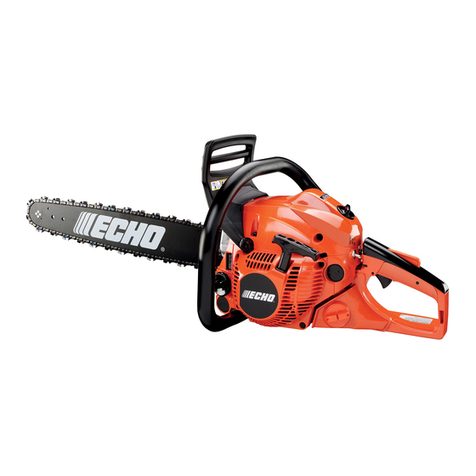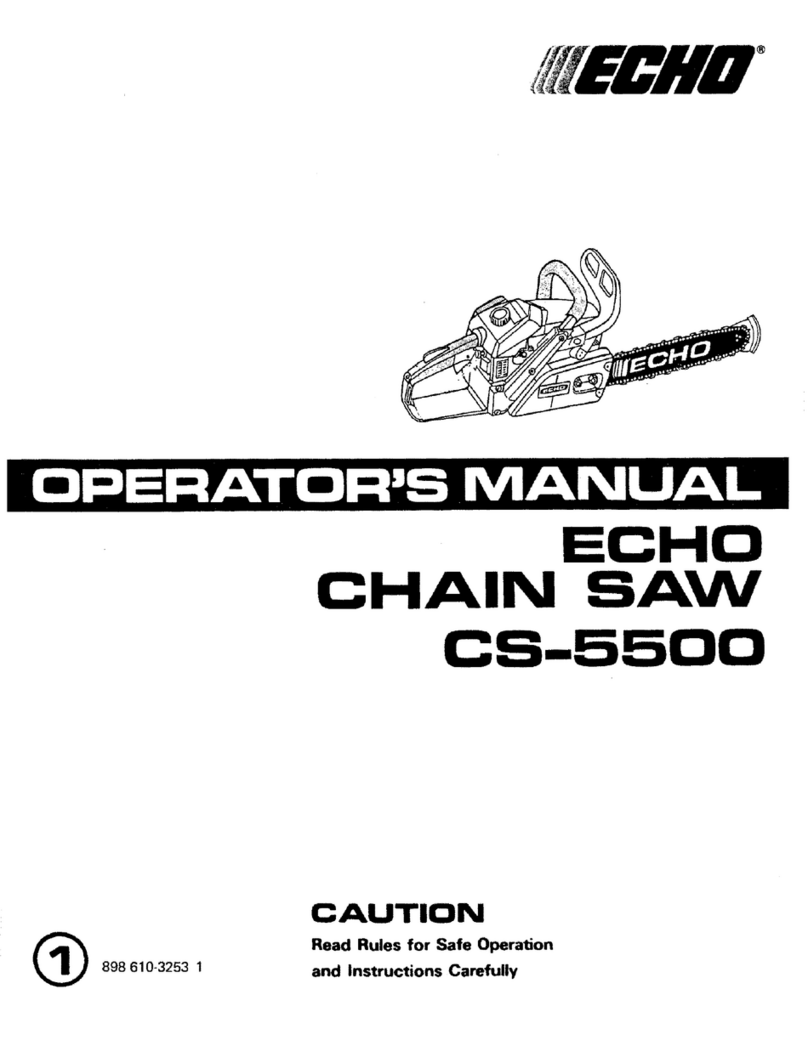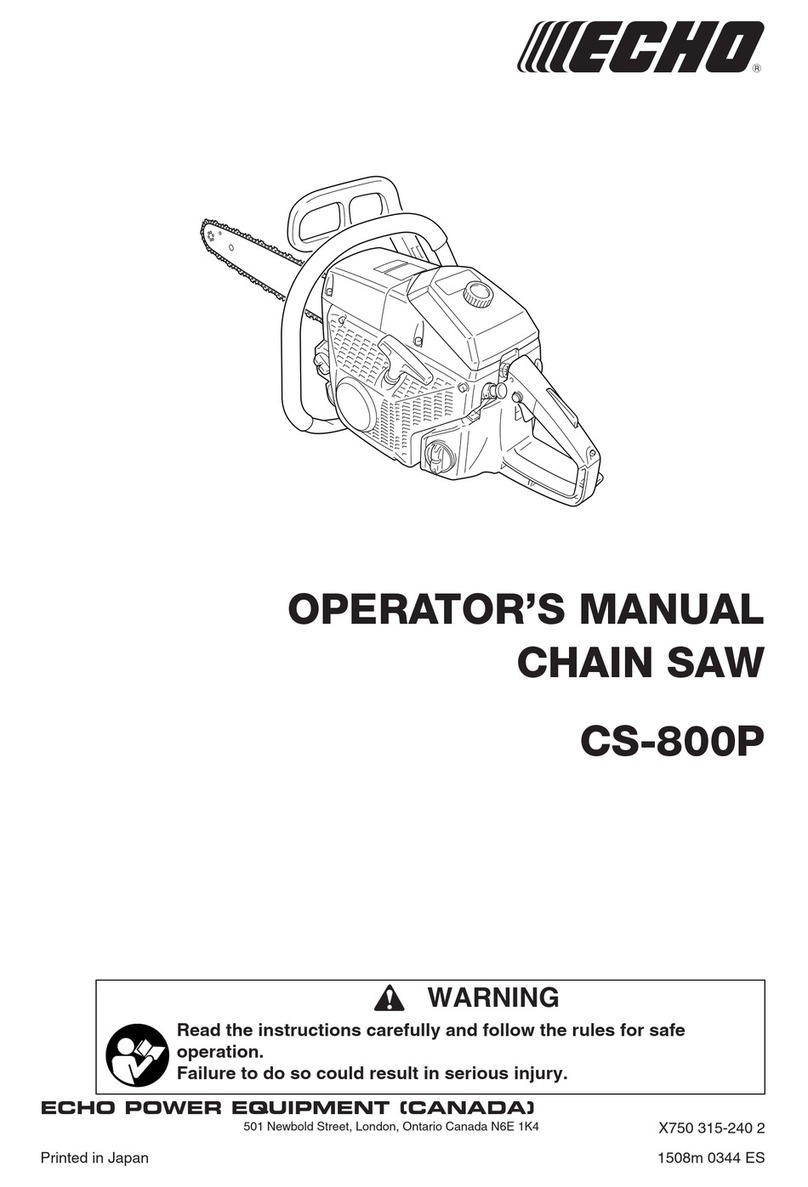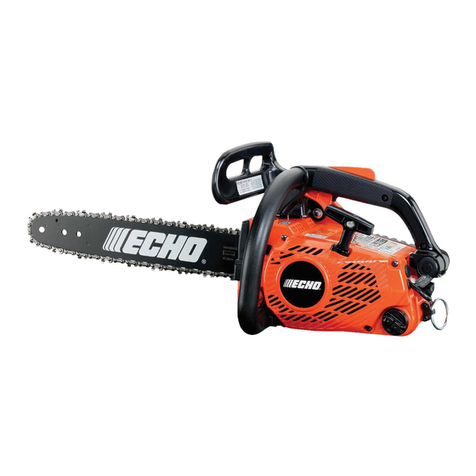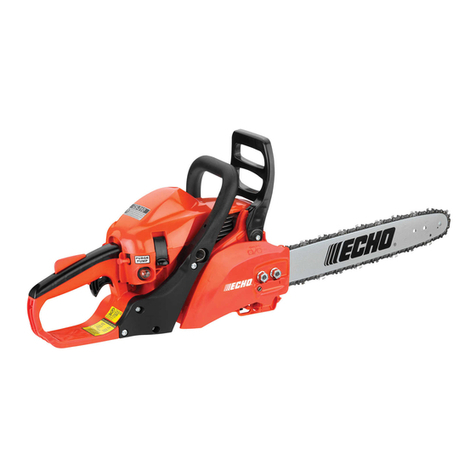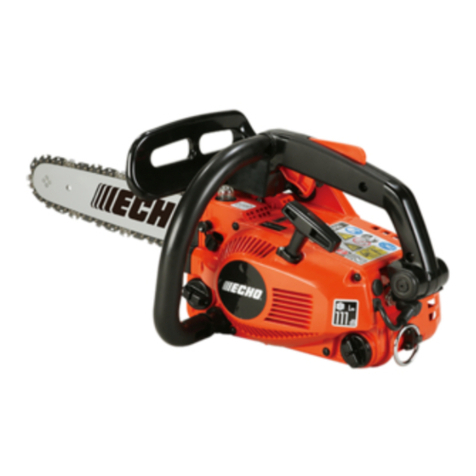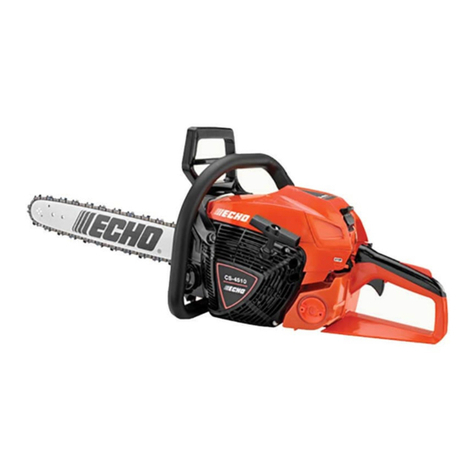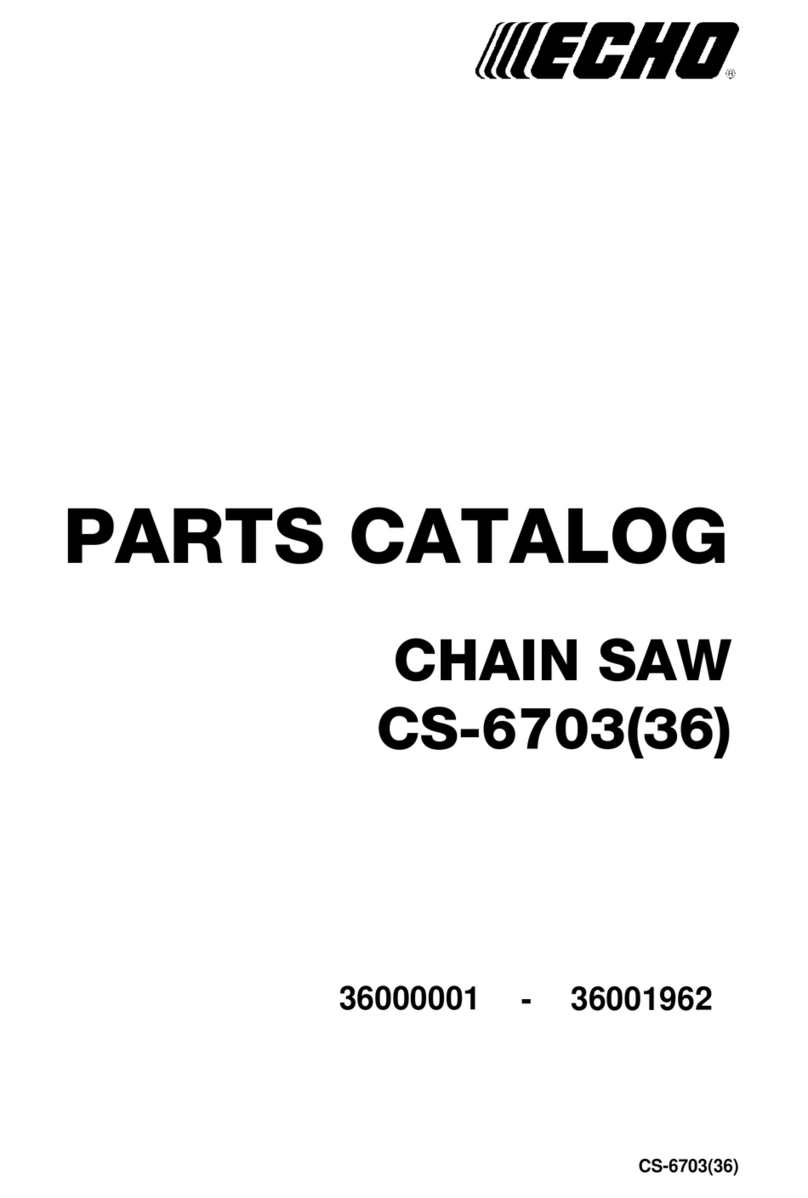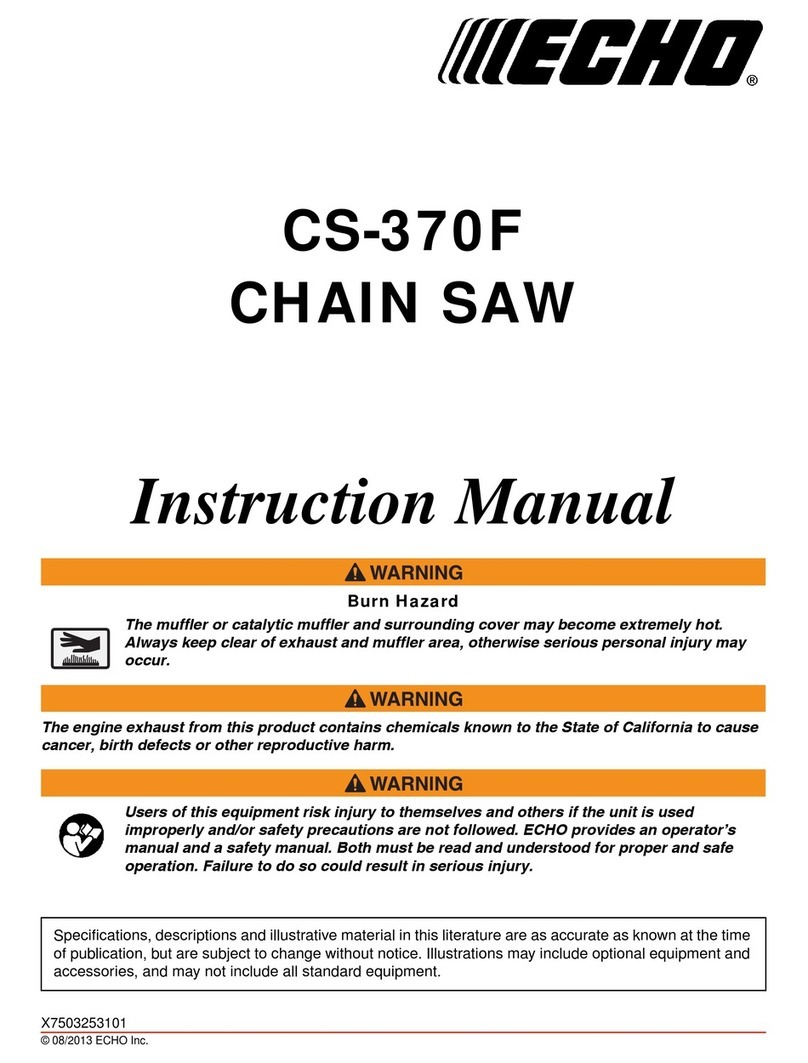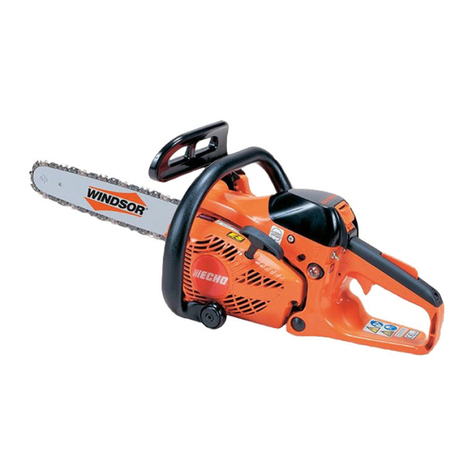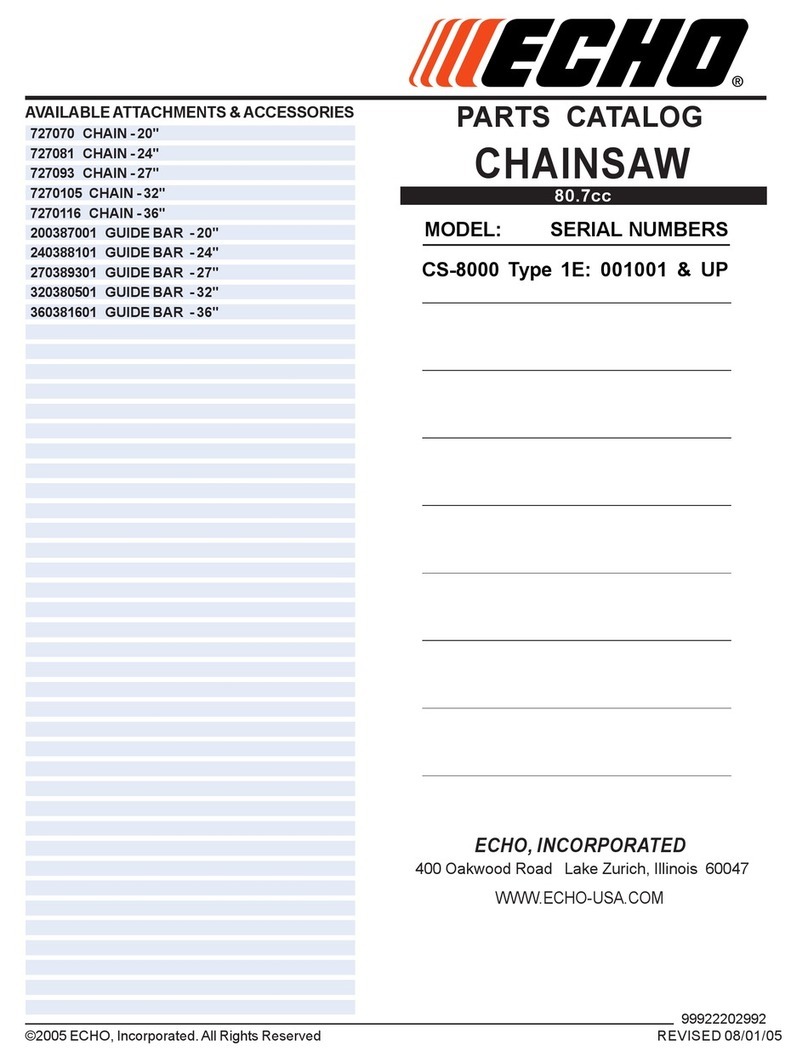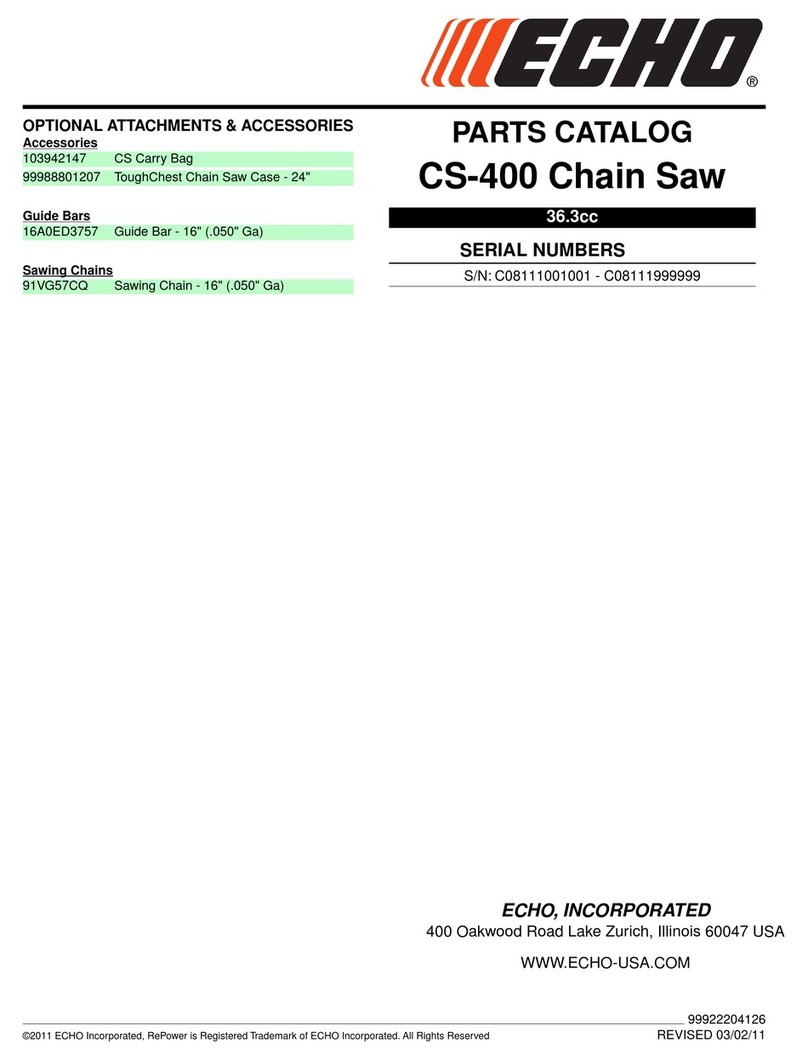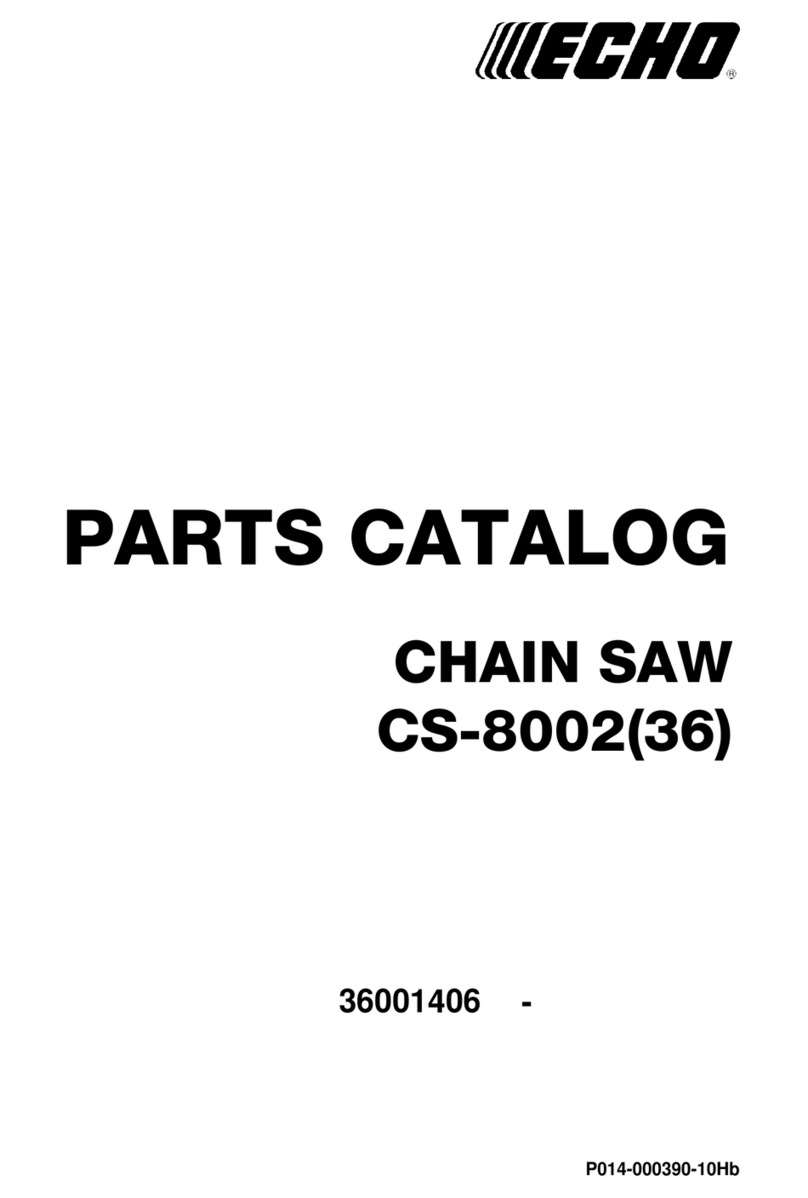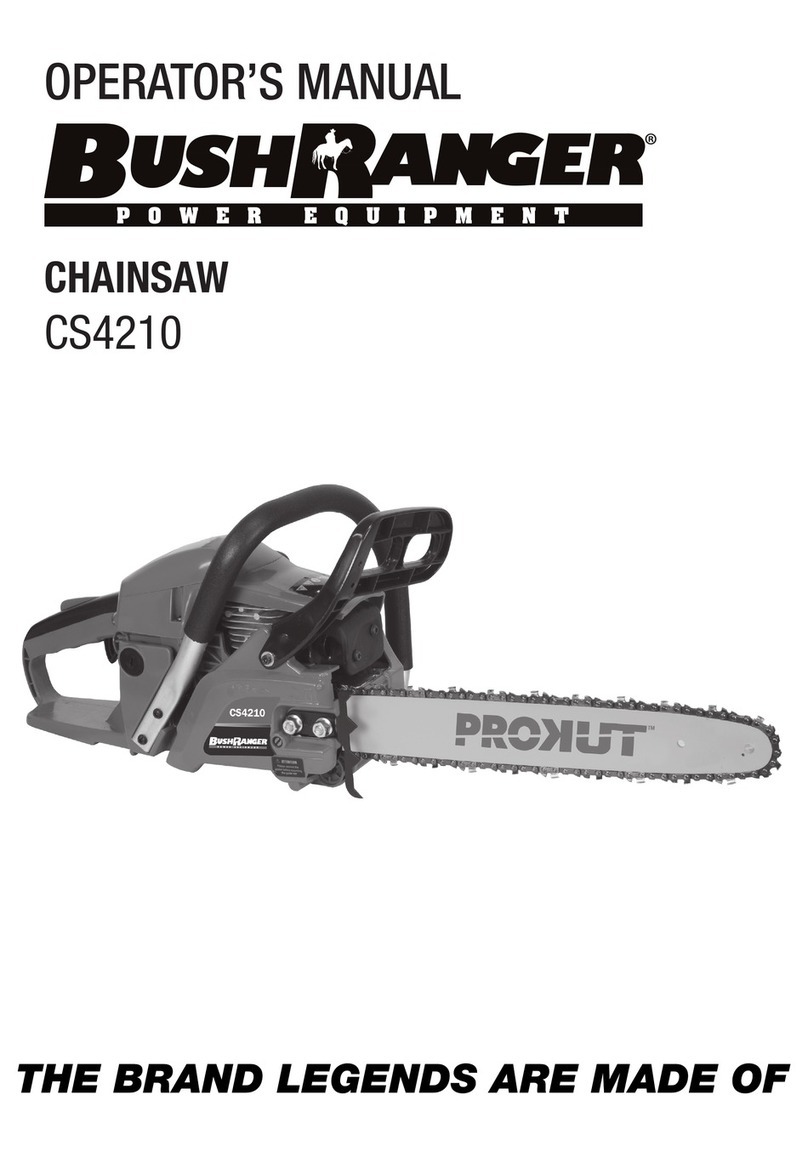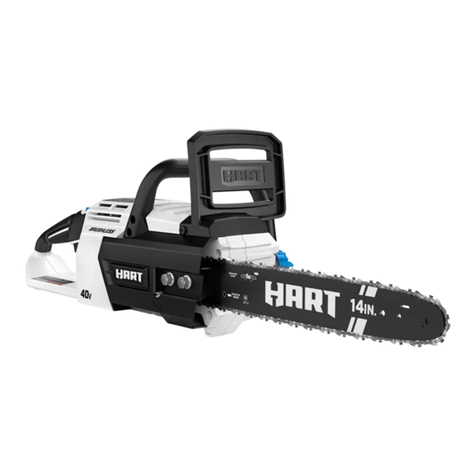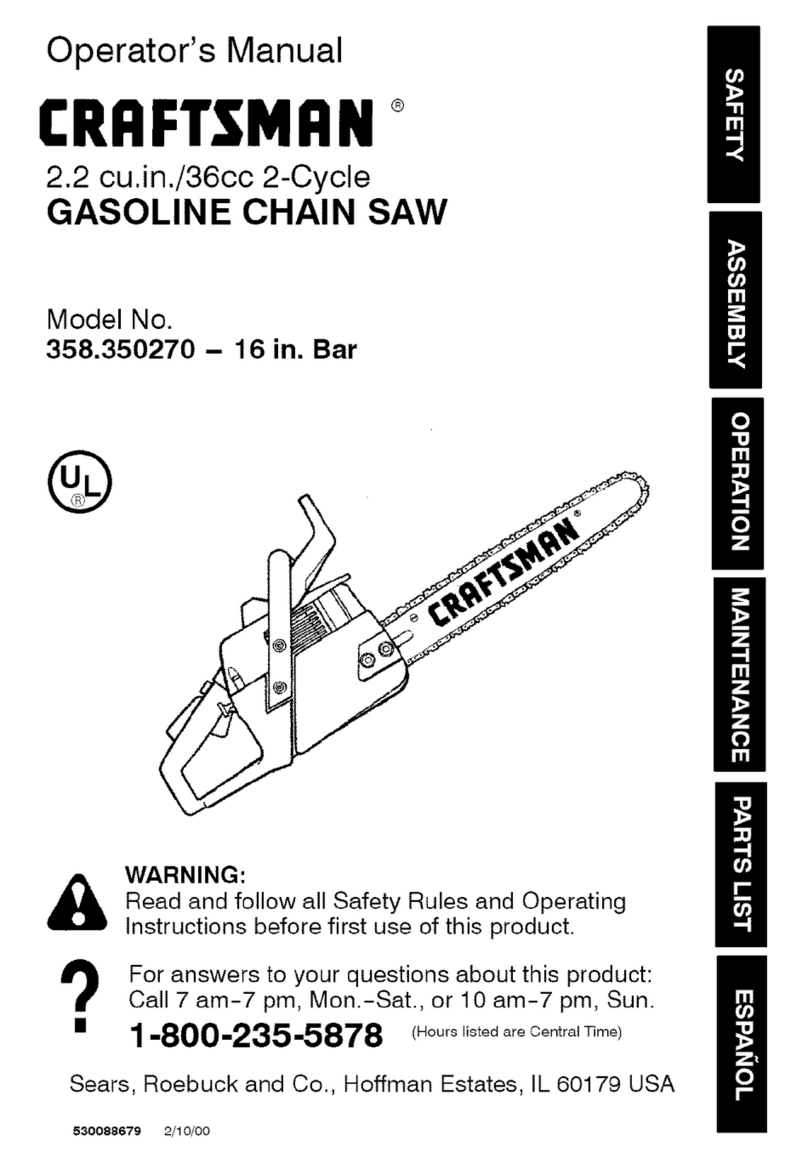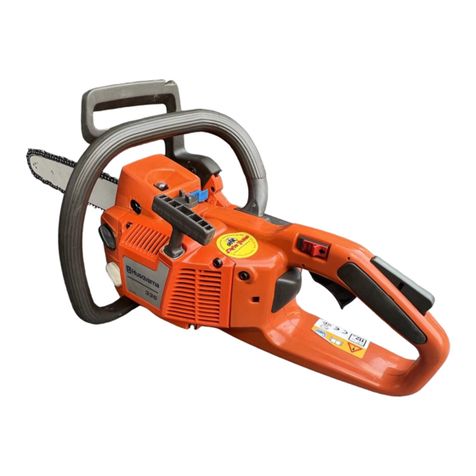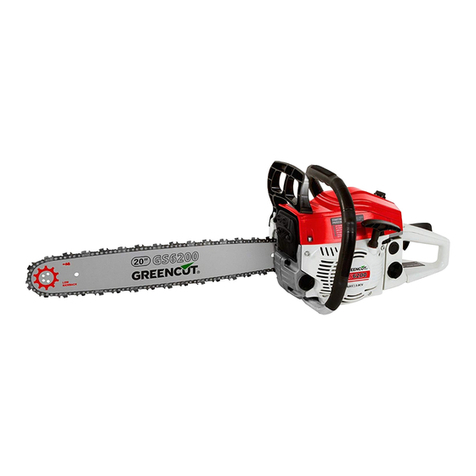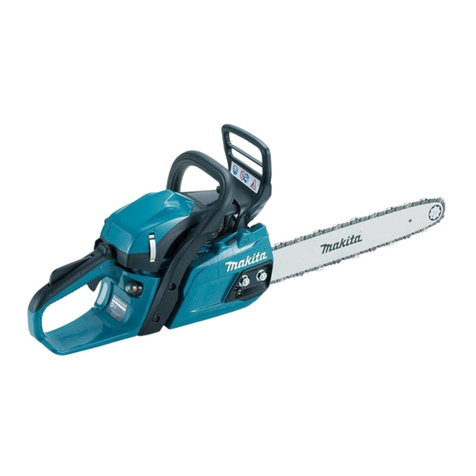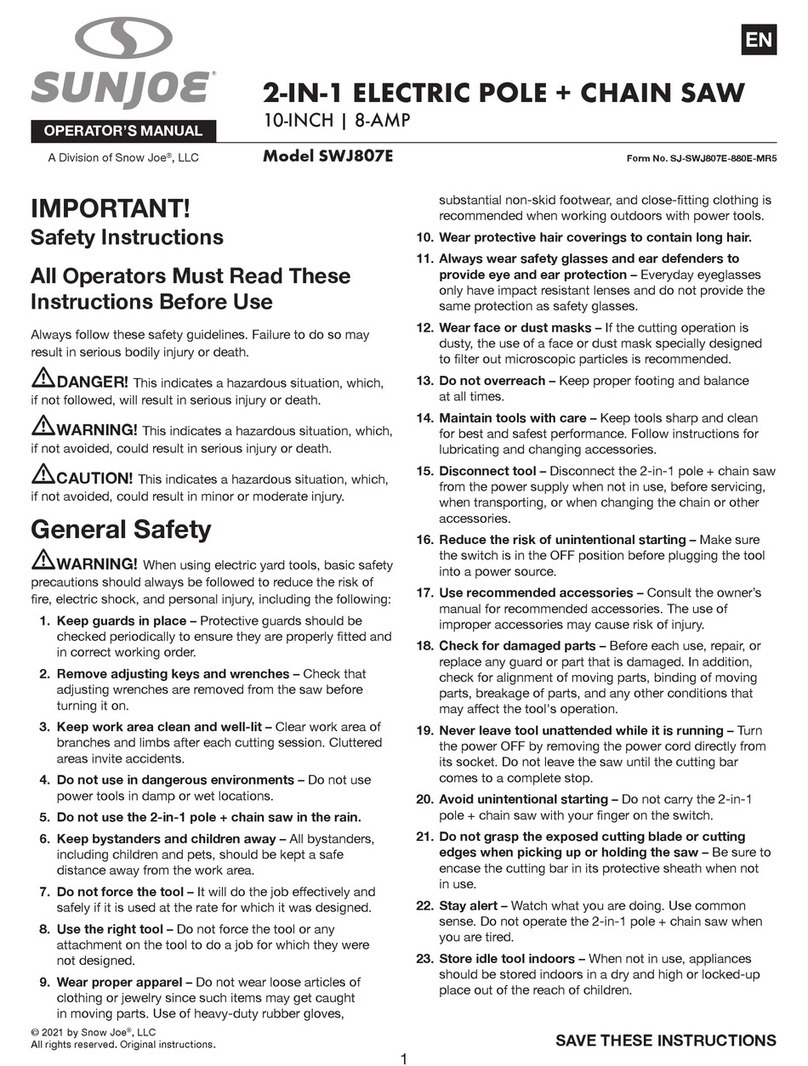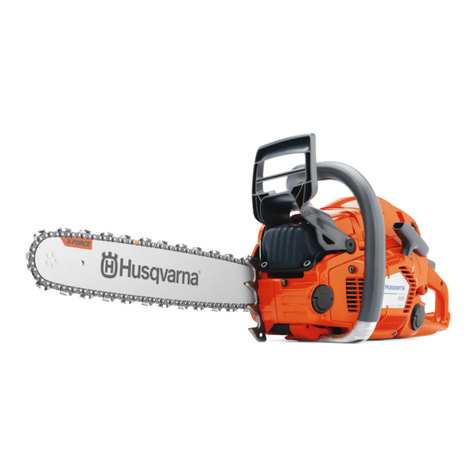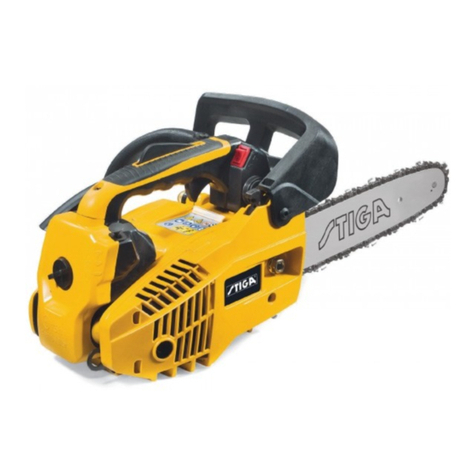
CS-370ES
CS-420ES 1
TABLE OF CONTENTS
Page Page
1 SERVICE INFORMATION................................... 2
1-1 Specifications.................................................. 2
1-2 Technical data................................................. 3
1-3 Torque limits.................................................... 4
1-4 Special repairing materials ............................. 4
1-5 Service Limits ................................................. 5
1-6 Special tools ................................................... 6
2 STARTER SYSTEM ............................................ 7
2-1 Disassembling starter assembly..................... 8
2-2 Replacing starter rope .................................... 9
2-3 Assembling starter........................................ 10
2-4 Replacing starter pawl .................................. 12
3 IGNITION SYSTEM ........................................... 14
3-1 Troubleshooting guide .................................. 15
3-2 Testing spark................................................. 16
3-3 Inspecting spark plug.................................... 16
3-4 Inspecting ignition switch.............................. 17
3-5 Replacing ignition switch .............................. 17
3-6 Inspecting ignition coil resistance................. 18
3-7 Replacing spark plug cap and coil................ 18
3-8 Replacing ignition coil................................... 19
3-9 Setting pole shoe air gaps............................ 19
3-10 Inspecting flywheel and key ......................... 20
4 FUEL SYSTEM .................................................. 21
4-1 Inspecting air filter ........................................ 22
4-2 Inspecting fuel cap and strainer ................... 22
4-3 Replacing purge bulb.................................... 23
4-4 Inspecting fuel tank and line......................... 24
4-5 Inspecting and replacing tank vent............... 25
4-6 Replacing fuel line, fuel tank vent assembly
and grommet................................................. 26
4-7 Adjusting carburetor ..................................... 27
4-7-1General adjusting rules................................. 27
4-7-2Presetting idle adjust screw, L mixture
needle and H mixture needle ....................... 27
4-7-3Adjusting carburetor ..................................... 29
4-8 Positioning plug of air cleaner cover ............ 30
4-9 Testing carburetor......................................... 31
4-10 Inspecting crankcase pulse passage ........... 31
4-11 Inspecting metering lever height .................. 32
4-12 Inspecting inlet needle valve ........................ 32
4-13 Replacing Welch plug................................... 33
4-14 Installing diaphragm ..................................... 33
4-15 Installing carburetor ...................................... 34
5 CLUTCH SYSTEM ............................................ 35
5-1 Inspecting clutch parts.................................. 35
5-2 Replacing clutch parts .................................. 36
5-3 Installing clutch assembly............................. 36
6 SAW CHAIN LUBRICATION SYSTEM............. 37
6-1 Inspecting oil cap and strainer...................... 37
6-2 Inspecting oil line .......................................... 38
6-3 Inspecting oil tank vent ................................. 38
6-4 Replacing oil line and grommet .................... 39
6-5 Disassembling auto-oiler assembly.............. 40
6-6 Replacing V-ring ........................................... 41
6-7 Assembling auto-oiler parts.......................... 42
7 ENGINE ............................................................. 43
7-1 Testing cylinder compression ....................... 44
7-2 Cleaning cooling air passage ....................... 44
7-3 Inspecting muffler and exhaust port ............. 45
7-4 Testing crankcase and cylinder sealing........ 45
7-5 Removing engine block ................................ 46
7-6 Inspecting cylinder........................................ 47
7-7 Inspecting piston and piston ring.................. 47
7-8 Inspecting crankcase and crankshaft........... 48
7-9 Replacing oil seal and ball bearing............... 48
7-10 Installing piston and piston ring .................... 49
7-11 Installing piston into cylinder ........................ 50
7-12 Installing engine block .................................. 51
8 CHAIN BRAKE SYSTEM.................................. 52
8-1 Disassembling chain brake........................... 52
8-2 Assembling brake parts ................................ 53
9 REAR HANDLE AND CONTROL SYSTEM ..... 54
9-1 Replacing throttle latch ................................. 55
9-2 Replacing cushions ...................................... 55
9-3 Replacing throttle trigger .............................. 57
10 GUIDE BAR MOUNTING SYSTEM ................ 59
10-1 Replacing chain tensioner ............................ 60
10-2 Replacing guide bar stud.............................. 60
10-3 Installing guide bar stud................................ 61
11 MAINTENANCE GUIDE .................................. 62
11-1 Service Intervals ........................................... 62
11-2 Troubleshooting guide .................................. 63
11-3 Disassembly Chart ....................................... 65
INDEX .................................................................... 66
